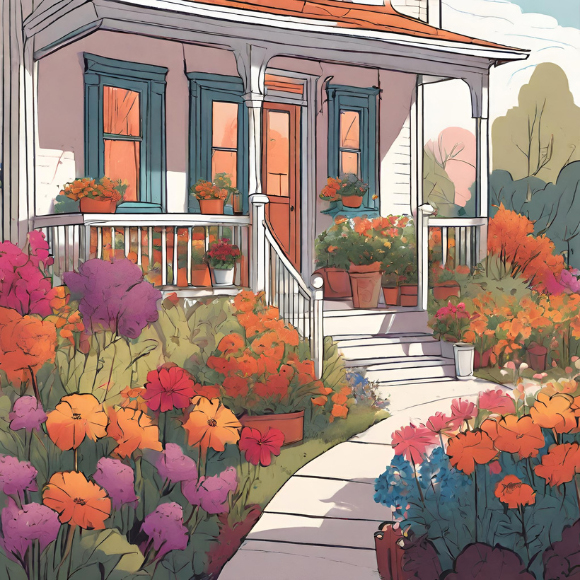Read by Matilda Longbottom

When we stepped into the world of our first home, a charming 1912 foursquare nestled in the historic district of a quaint town, we never expected the front garden to be fluent in an unwelcoming dialect. With its mature plantings—trees, a rhododendron, climbing roses, azaleas, hostas, and sleepy crocuses and daffodils—our initial delight turned to bemusement on our first Halloween.
As trick-or-treaters puzzled over navigating the thorny maze to reach our porch, it became clear that our garden was not on the same page as our festive spirit. Determined to transform our botanical barrier, we embarked on a journey to rewrite the story of our front garden.
The first step involved a painful acknowledgment—aggressive pruning wasn’t the solution. Inspired by visions of backyard barbeques and friendly brunches, we considered starting anew. However, the garden seemed as much a part of our historic home as the original woodwork and ripping it out felt sacrilegious.
Digging into the history of our abode, we learned that the previous occupants were described as “keeping to themselves.” Suddenly, the overgrown greenery began to make sense. It was a living, breathing “Keep Out! Private Property!” sign.
Our reluctance to tamper with the established order shifted when we realized our role as custodians of this space. We needed a garden that echoed our open-door policy, not one that barricaded us in. So, with determination and a touch of trepidation, we began the transformation.
Out went the thorny barricade, relocated hydrangeas, and overgrown holly tree. In their place sprouted a new narrative—one of welcoming colors and friendly blooms. Blue Hill meadow sage, Roxanne geraniums, and pincushion flowers lined the path, inviting visitors to follow. Taller Telham Beauty bellflowers and Queen of the Night’ tulips added height and drama, creating a garden that was both enchanting and accessible.
Now, as we sit on our revamped porch, the garden no longer whispers, “Keep Out.” Instead, it shouts a warm “Welcome, Neighbor!” We’ve become a hub of community activity, with neighbors stopping by for a chat and trick-or-treaters multiplying in numbers.
Our front garden has evolved from a thicket with a language of exclusion to a flourishing landscape that speaks the universal language of welcome. ❖
About the Author: Hannah Karena Jones is a Master Gardener, and blue-ribbon-winning salsa maker in Pennsylvania whose writing has also appeared in The National Gardner.


 Previous
Previous

